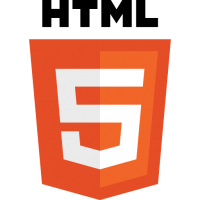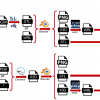XSeen Examples
Submitted by Leonard Daly on Sun, 07/23/2017 - 20:15The importance of examples in learning a new language cannot be overstated. This section contains illustrative examples of using XSeen. As has been discussed there are a number of similarities between XSeen and A-Frame and X3D. These will be obvious in the examples. It is possible to intermix tags from each language in a manner that makes sense.

 This is part of a multi-part post that explores some ideas for integrating X3D into HTML5 DOM. It explores various options and their implications. The primary post is "
This is part of a multi-part post that explores some ideas for integrating X3D into HTML5 DOM. It explores various options and their implications. The primary post is " HTML gained wide-spread acceptance because it was straight-forward and produced results even if you did write it perfectly - it is very forgiving. Of course, you get better results when written correctly, but you are never puzzling out what
HTML gained wide-spread acceptance because it was straight-forward and produced results even if you did write it perfectly - it is very forgiving. Of course, you get better results when written correctly, but you are never puzzling out what 
